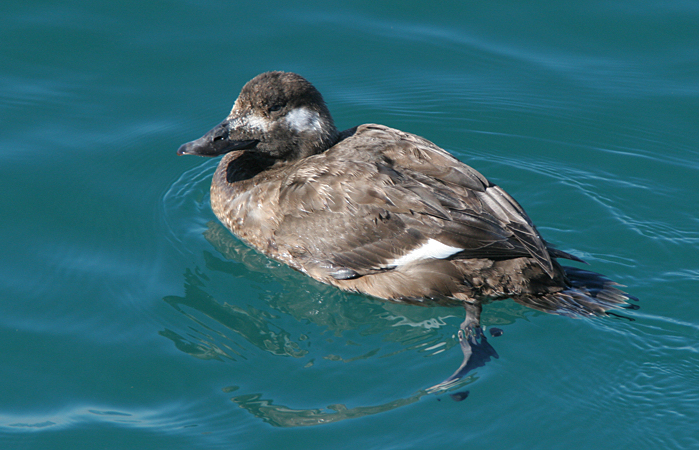
Location: Imperial Beach, CA
Date: 2007-01-14
Lens: Canon 600mm IS F4 + 1.4x II Converter

 White-winged scoter
Melanitta fusca
White-winged scoter
Melanitta fusca
 Description
DescriptionThe White-winged Scoter often nests in association with gull breeding colonies. Because the scoters build their nests in dense vegetation, their chicks are safe from predation by the gulls. White-winged Scoters dive underwater to forage for clams, mussels, and crustaceans. Occasionally they eat insects, aquatic plants, and fish.
General: 19 to 23 inches in length.
Adult Male: Entirely black plumage. Large white wing patch. White comma-shaped eye patch. White eyes. Black bill with reddish sides and orange nail. Reddish legs with black foot webbing. Immature male similar to female.
Adult female: Entirely dark brown plumage. Large white wing patch. Two whitish spots on the face. Dark brown eyes. Black bill. Reddish legs with black foot webbing. Immature females are somewhat paler.
Winters in coastal estuaries, bays, and open coastline with shallow water over shellfish beds. Breeds on large freshwater or brackish lakes and ponds.
 Nesting
Nesting6-16 creamy-buff to light pink eggs. The eggs have a 25-30 day incubation period. Fledging occurs in 63-75 days. The nest is a twig and down lined hollow in the ground. The nest is built in dense vegetation away from water.